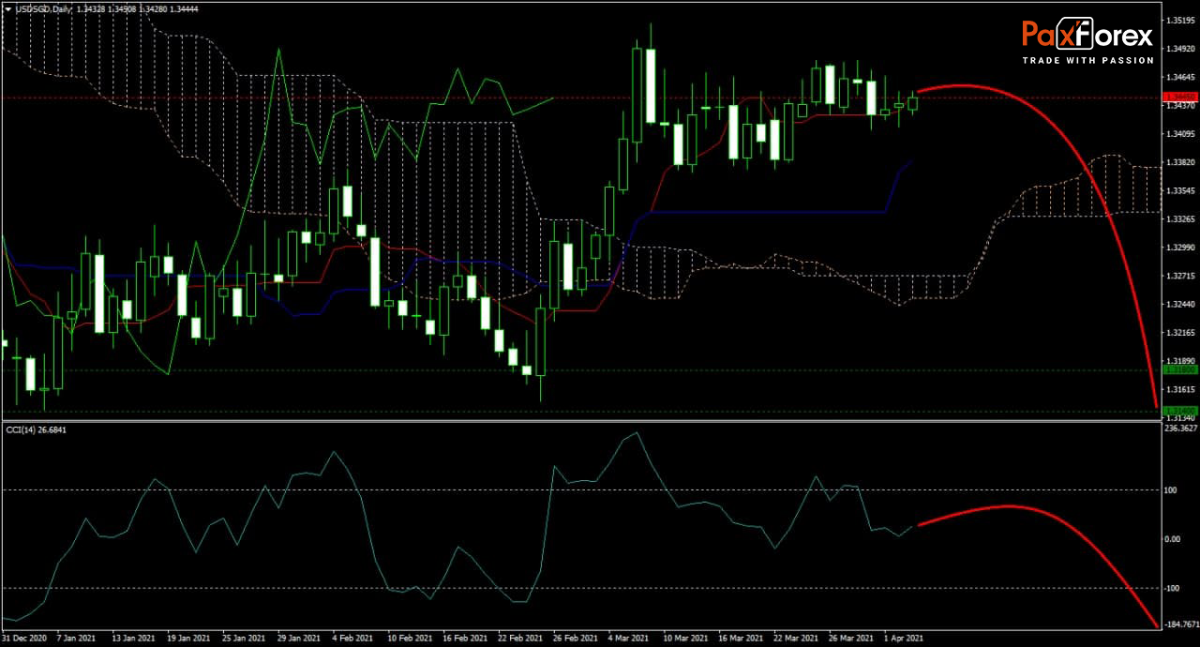The US Final Markit Services PMI for March is predicted at 60.0, and the US Final Markit Composite PMI is predicted at 59.1. Forex traders can compare this to the US Markit Services PMI for February, reported at 59.8, and to the US Markit Composite PMI, reported at 59.5. US Factory Orders for February are predicted to decrease by 0.5% monthly. Forex traders can compare this to US Factory Orders for January, which increased by 2.6% monthly. The US ISM Non-Manufacturing PMI for March is predicted at 58.5. Forex traders can compare this to the US ISM Non-Manufacturing PMI for February, reported at 55.3.
The forecast for the USD/SGD remains bearish despite the strong March NFP report out of the US released last Friday, while markets were closed for Easter. The proposed corporate tax increase will result in job losses, and the present euphoria over a strong summer appears misplaced. The Ichimoku Kinko Hyo Cloud entered a sideways trend, and the Kijun-sen and Tenkan-sen are expected to follow suit. The CCI dropped out of extreme overbought territory and formed a series of lower highs, confirming weakening bullish momentum.

Should price action for the USD/SGD remain inside the or breakdown below the 1.3415 to 1.3470 zone, the following trade set-up is recommended:
- Timeframe: D1
- Recommendation: Short Position
- Entry Level: Short Position @ 1.3445
- Take Profit Zone: 1.3140 – 1.3180
- Stop Loss Level: 1.3515
Should price action for the USD/SGD breakout above 1.3470, the following trade set-up is recommended:
- Timeframe: D1
- Recommendation: Long Position
- Entry Level: Long Position @ 1.3515
- Take Profit Zone: 1.3610 – 1.3655
- Stop Loss Level: 1.3470
Amazon | Fundamental Analysis
EUR/JPY | Euro to Japanese Yen Trading Analysis
Recent articles

EUR/JPY | Euro to Japanese Yen Trading Analysis
